Interest in pairing solar with battery storage has surged over the past few years, largely driven by concerns about the reliability of the country’s outdated electric grid and the reality of increasingly severe power outages.
Tesla recently announced that there may be more than 50,000 Powerwall battery systems installed at homes and business in California alone.

Despite soaring deployment numbers and increasing customer demand, little data has been available to understand the current state of the solar+storage market. A new report from Lawrence Berkeley National Laboratory provides a valuable initial look at residential and non-residential distributed solar+storage markets, showing significant growth and huge potential for the future.
In Behind-the-Meter Solar+Storage: Market Data and Trends, researchers at Berkeley Lab looked at data from 50,000 residential solar+storage installations and 1,000 non-residential installations, representing about 90% of paired systems installed through the end of 2020.
 They found that, overall, about 17% of all installed U.S. battery storage capacity is paired with solar behind a customer’s utility meter. Surprisingly, all those customer-sited systems add up to more than the entire solar+storage capacity installed directly on the grid: roughly 550 MW of customer-sited solar+storage versus 420 MW of grid-sited systems. Two-thirds of the customer capacity comes from small residential systems, which tend to be sized around 5 kW.
They found that, overall, about 17% of all installed U.S. battery storage capacity is paired with solar behind a customer’s utility meter. Surprisingly, all those customer-sited systems add up to more than the entire solar+storage capacity installed directly on the grid: roughly 550 MW of customer-sited solar+storage versus 420 MW of grid-sited systems. Two-thirds of the customer capacity comes from small residential systems, which tend to be sized around 5 kW.
Even so, most home solar systems are still being installed without storage. Roughly 6% of residential solar systems installed in 2020 included battery storage. Non-residential system attachment rates were even lower, with 2% of those solar systems paired with storage. As might be expected, the numbers vary greatly depending on location.
In Hawaii, where exported solar energy is either prohibited or compensated at a much lower rate, 80% of home solar and 40% of non-residential installations are being paired with storage. And in California, where wildfire-related utility outages have become a concern, a significant number of existing PV systems are being retrofitted to add storage.
Both states may offer a look into the future of solar+storage across the country as states reevaluate solar net metering policies and more regions experience an uptick in power outages resulting from extreme weather conditions.
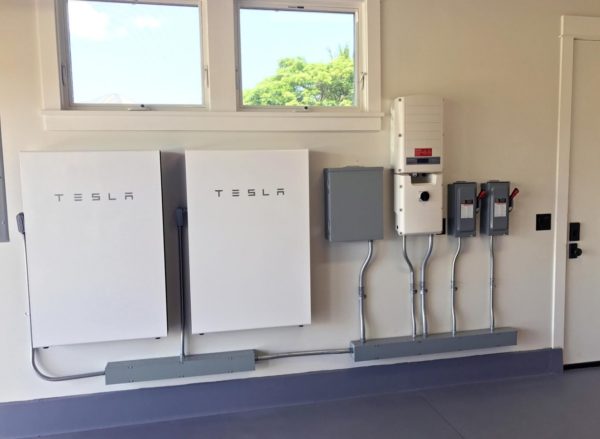
Image: Sunrun/Tesla
System sizing
Another finding of the report concerns system sizing. Two battery manufacturers have dominated the residential storage market, Tesla and LG Chem. Both offer 5-kW batteries, with 13.5 kWh of energy storage capacity for Tesla’s Powerwall and 9.5 kWh of storage for LG Chem’s RESU 10H.
When comparing solar PV sizing to storage capacity, the researchers found that the batteries could storage an average of 30-80% of daily solar generation. Commercial installations have a greater variation in sizing, but are typically much larger than residential systems, with a median battery size of 100 kW and 200 kWh.
The report also explored the cost premium of adding storage to a solar installation. Across both residential and non-residential systems, incorporating battery storage was found to increase the cost of a solar installation by an average of $1.2 per watt. That represented about a 33% price increase for residential solar, increasing the average installed cost from $3.8 per watt for solar-alone to $5.0 per watt for solar+storage. For a typical residential PV system sized at 7 kW, that would translate into an added cost of $8,400 to incorporate battery storage.
Equity issues
The report also considered equity issues. It comes as no surprise that households installing solar+storage generally have higher incomes than regional averages, which also is the case for solar-alone. Berkeley Lab researchers found that the income gap for solar+storage is even more pronounced. Solar+storage adopters had median incomes that were 66% higher than average regional incomes as opposed to 41% higher for households only installing solar.
The findings illustrate the need for targeted low-income battery storage incentives and higher compensation levels to ensure more equitable solar+storage development, particularly for lower-income households with medically vulnerable members and those located in regions subject to extreme weather conditions where access to reliable electricity is a critical need.
The equity gap can also be seen in non-residential solar+storage. The researchers found that 70% of non-residential solar+storage systems have been installed at for-profit companies. Schools represent the one nonprofit sector realizing more significant development of solar+storage projects. Schools account for the majority of non-commercial solar+storage, representing 25% of non-residential installations. A minority of systems were installed to support nonprofit entities like community organizations, affordable housing providers, and local governments.
The report’s findings highlight a few key points.
First, customer-sited solar+storage has a large (and often underappreciated) potential to provide grid benefits, representing a larger combined capacity than all grid-sited projects. These small systems can be aggregated together to replace the capacity currently provided by fossil fuel power plants, cleaning up the grid while strengthening resilience by decreasing reliance on large-scale, centralized points of grid failure.
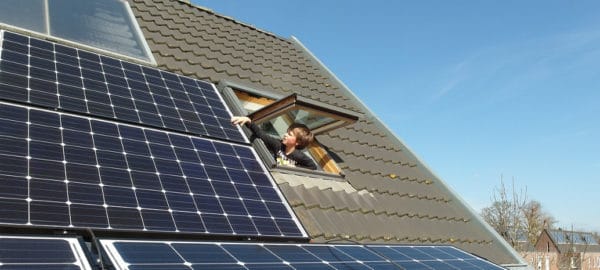 Second, the potential of customer-sited solar+storage is being underutilized. While paired solar and storage systems are becoming more common, they still represent only a small fraction of solar installations.
Second, the potential of customer-sited solar+storage is being underutilized. While paired solar and storage systems are becoming more common, they still represent only a small fraction of solar installations.
Every solar system installed without storage is a missed opportunity to turn a source of intermittent generation into a flexible grid resource and source of local reliability. There is also a massive opportunity to retrofit existing solar installations with battery storage.
Third, more needs to be done to ensure that solar+storage is being installed in lower-income areas. Low-income households and frontline communities are often more vulnerable to the impacts of power outages and have fewer resources available to respond and recover to extended outages. These communities should be prioritized in the design and implementation of policies and programs incentivizing greater solar and battery storage deployment.
So, customer-sited solar+storage has clearly come a long way and, clearly, still has a long way to go to reach its full potential.
To learn more about the new report from Berkeley Lab, Clean Energy Group will be hosting a webinar with the authors on August 19th. Anyone can register for this free webinar.
***
Seth Mullendore is vice president and project director for Clean Energy Group, overseeing projects ranging from customer-sited solar and battery storage to the replacement of power plants with clean technologies. He works with policy makers, project developers, industry, advocates, and community and environmental justice groups to advance clean energy policies and projects, with a focus on achieving greater access to solar and battery storage technologies for disadvantaged communities.
The views and opinions expressed in this article are the author’s own, and do not necessarily reflect those held by pv magazine.
This content is protected by copyright and may not be reused. If you want to cooperate with us and would like to reuse some of our content, please contact: editors@pv-magazine.com.
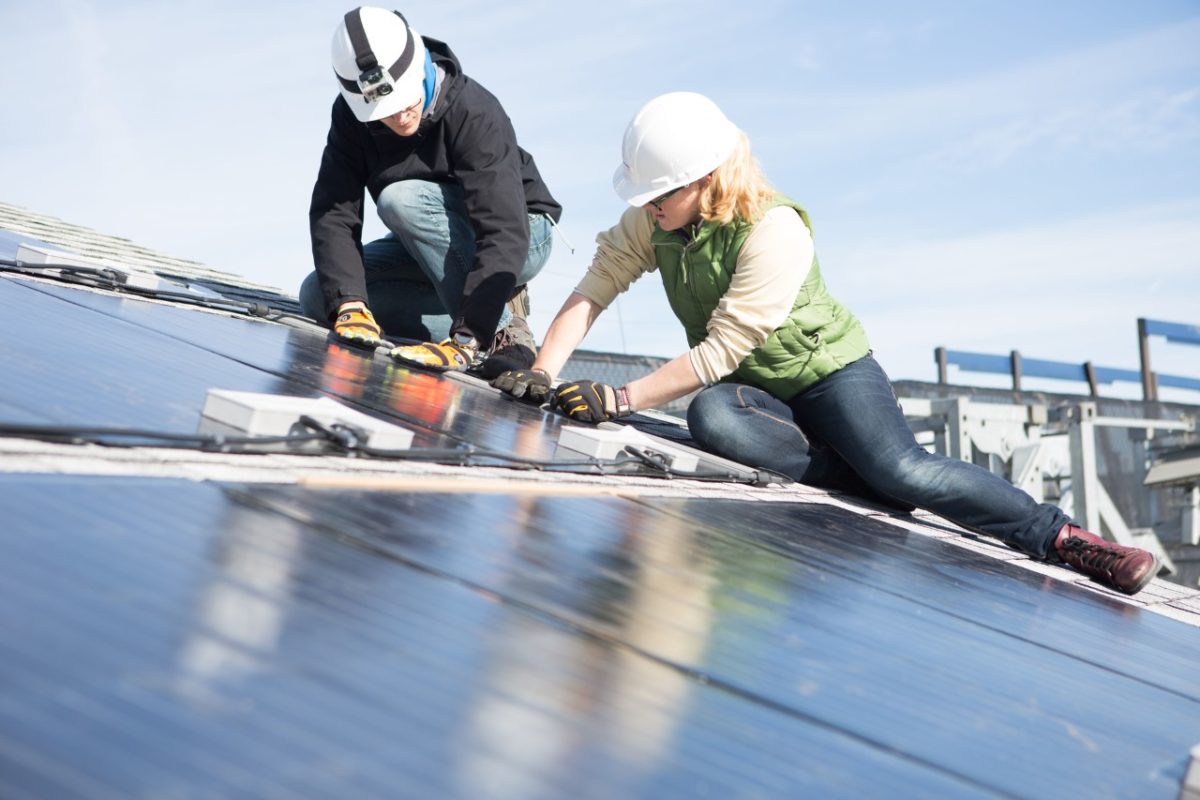
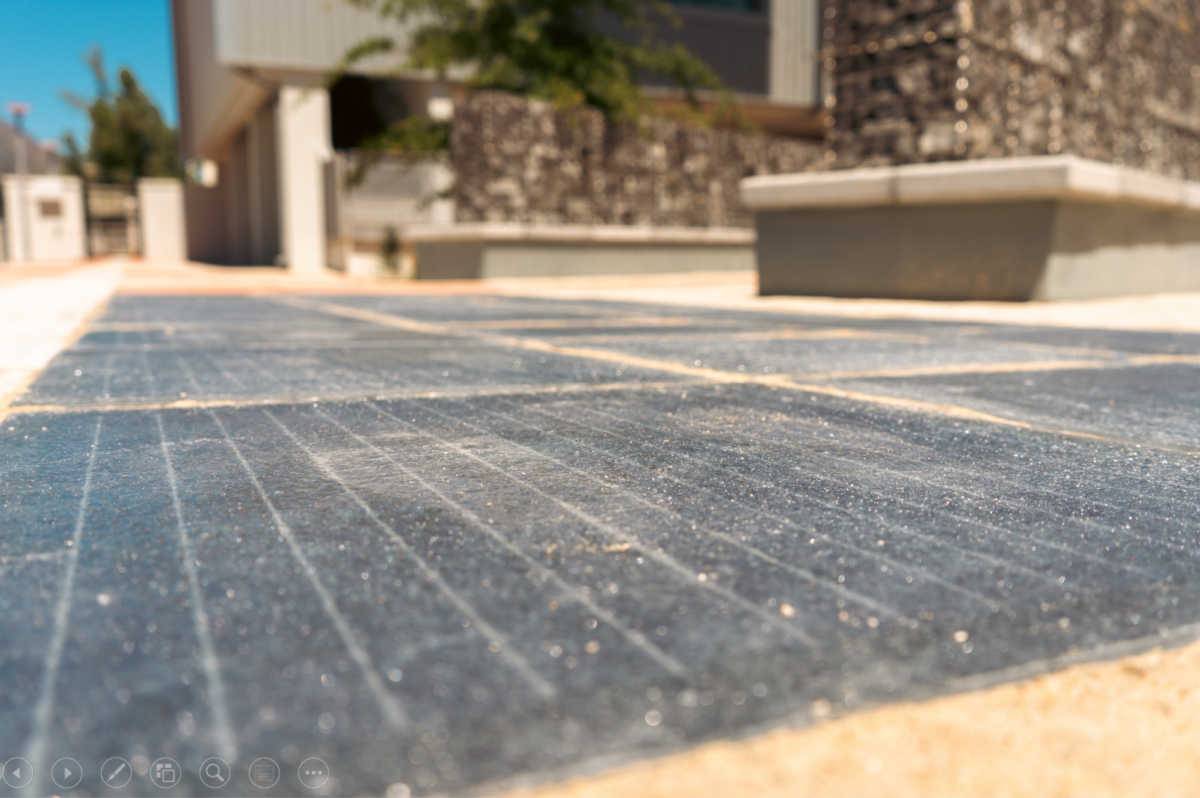


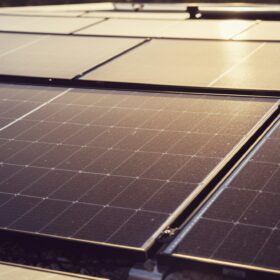

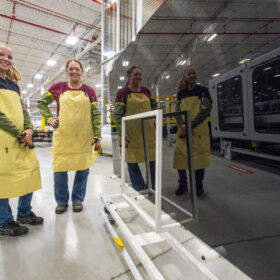
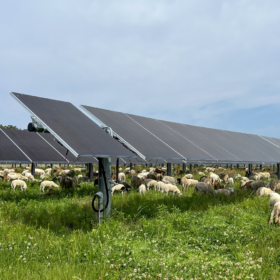
The US Federal and local governments appear to be opposing solar panels and battery storage as much as they’re promoting it. For instance, the US Federal tax credit applies to batteries ONLY if they’re charged 100% from renewable sources. So does that mean if a software bug or accident causes so much as 1Wh of grid energy to be stored in your batteries that this disqualifies the battery storage tax credit? This is stupid on its face!
Also, local governments restrict the total amount of solar panels one can install based on their energy use history. Why??? I can understand that there are limits due to NEC codes, but why the limits based on energy use?
I get the feeling that governments want to appear to promote green energy but actually oppose it.